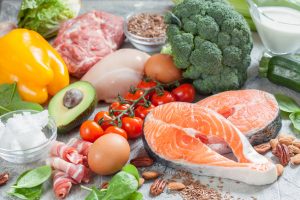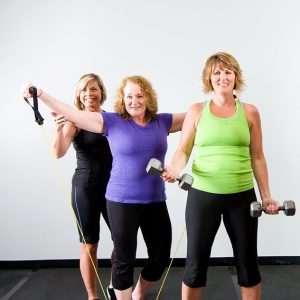We asked Peak Performance’s own Exercise Physiologists about how they have created routine in their lives. From working out, to meal prepping to staying hydrated, read on for their best tips!
Developing a routine with hydration should be as essential as brushing your teeth in the morning or washing your face at night. Too many people don’t hydrate their bodies enough on a day to day basis; this is why it’s one of the very first things we address when beginning an exercise program at Peak. Many times I will ask a client “how many cups on average do you think you have a day?” Many people will answer with “3 bottles a day” and point to the water bottle they have in their hand, whether it be an 8oz Poland spring or a giant Yeti 36oz. Many people will admit they don’t get enough water, but somehow struggle with remembering to drink. Others even claim they don’t want to be burdened with going to the restroom more frequently, but when I pry I find many of them are going to the restroom frequently at night but not during the day. That is due to the body slowing down at night and renal function may to, but what about the waking hours? Those missed opportunities to nourish your body, shouldn’t we focus on that? My general recommendation to new clients starting out is 8 x 8 oz cups per day; this is commonly more than they are used to. However, there are no actual hard and fast guidelines due to the fact that number depends on many factors such as body mass, the rate at which you sweat, heat and humidity, exercise intensity and duration. Regardless of your water intake, since everyone’s is different, developing a routine in order to hit that mark every day is the key piece.

Reminders can be very helpful when developing a new habit. I love setting a reminder in my phone, whether it’s for a meeting, remembering to wish my cousin good luck, and yes, drinking water. Each reminder has its significance in my life. Many times it’s the little things in life we take for granted; our bodies will continue to run even if we neglect it, but how can we increase its efficiency? What we don’t realize is that these unique systems that make up the human body are all integrated by the vast circulation that is dependent upon water. Physiologically nothing would happen without the presence of water; therefore shouldn’t it be a higher priority? Many of us drink a cup of coffee before we even have a cup of water in the morning. Make hydration a priority in your life; add it as a reminder in your phone every hour to drink.
If you are utilizing a reusable water bottle, try this tip for holding yourself accountable: each time you drink your entire water bottle, place a rubber band around it. This is a simple way to track your fluid intake throughout the day. This will also give you an idea of how much water you normally drink on days when you are exercising light or hard and days when you are busy vs. days you are not busy. Find out what’s holding you back from drinking more water because we all can use the extra hydration.
Brandon Ayala, CSCS







